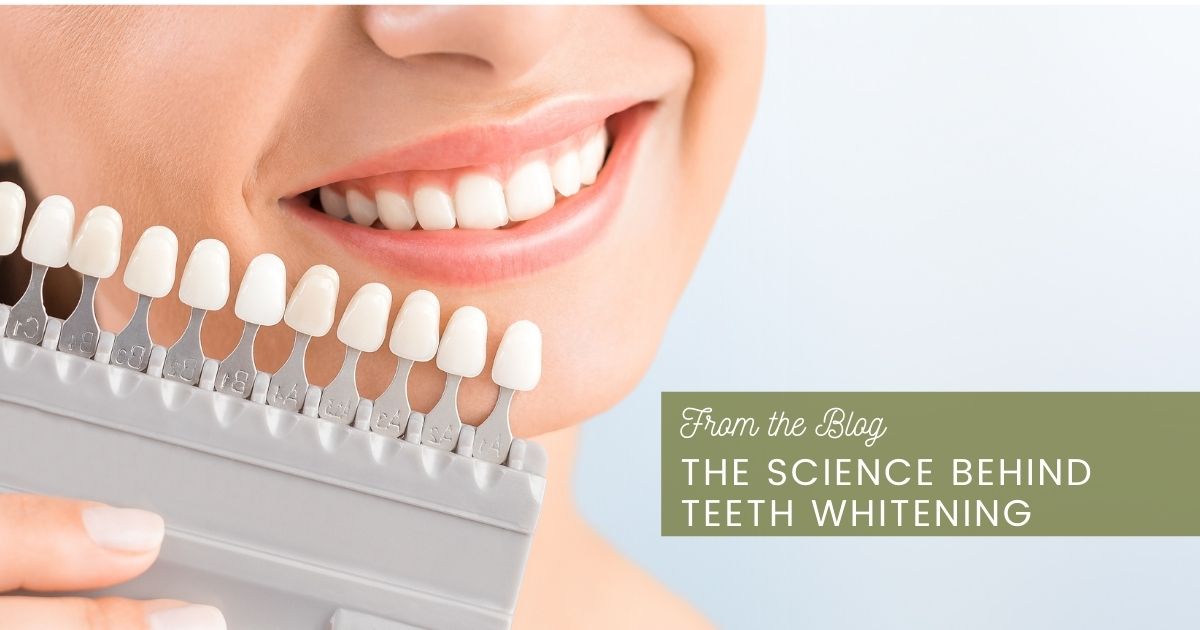
Every day, patients walk into our practice and leave an hour later with a brighter smile. But teeth whitening isn’t magic—though the incredible results it offers can certainly make it seem that way.
Let’s take a closer look at the science behind teeth whitening.
- Your teeth might not look or feel like a sponge—but they are filled with pores. The pores in your teeth allow the whitening gel to be absorbed and push out the stains currently taking up space, which is why your teeth are able to become whiter in such a short period of time.
- Did you know that nearly half of all people worldwide have naturally sensitive teeth? Sensitivity during the whitening process is entirely natural. This can happen because whitening temporarily dehydrates your teeth, which can make it difficult for them to insulate the nerve from temperature changes for 12-36 hours. Over-the-counter pain relievers can help minimi[z]e discomfort, while a fluoride treatment immediately after whitening can also promote hydration.
- After whitening your teeth, the pores remain open and are susceptible to stains—that’s why we recommend not eating anything dark in col[o]r for at least the first 24 hours after an in-chair visit. If you whiten your teeth at home, we recommend doing so before bed as the pores will be open while you sleep, lessening the risk of any stains occurring as you likely won’t be consuming food during your slumber.
Ready to book your teeth whitening visit? Simply contact our practice for an appointment. We can’t wait to help you achieve your smile goals.

